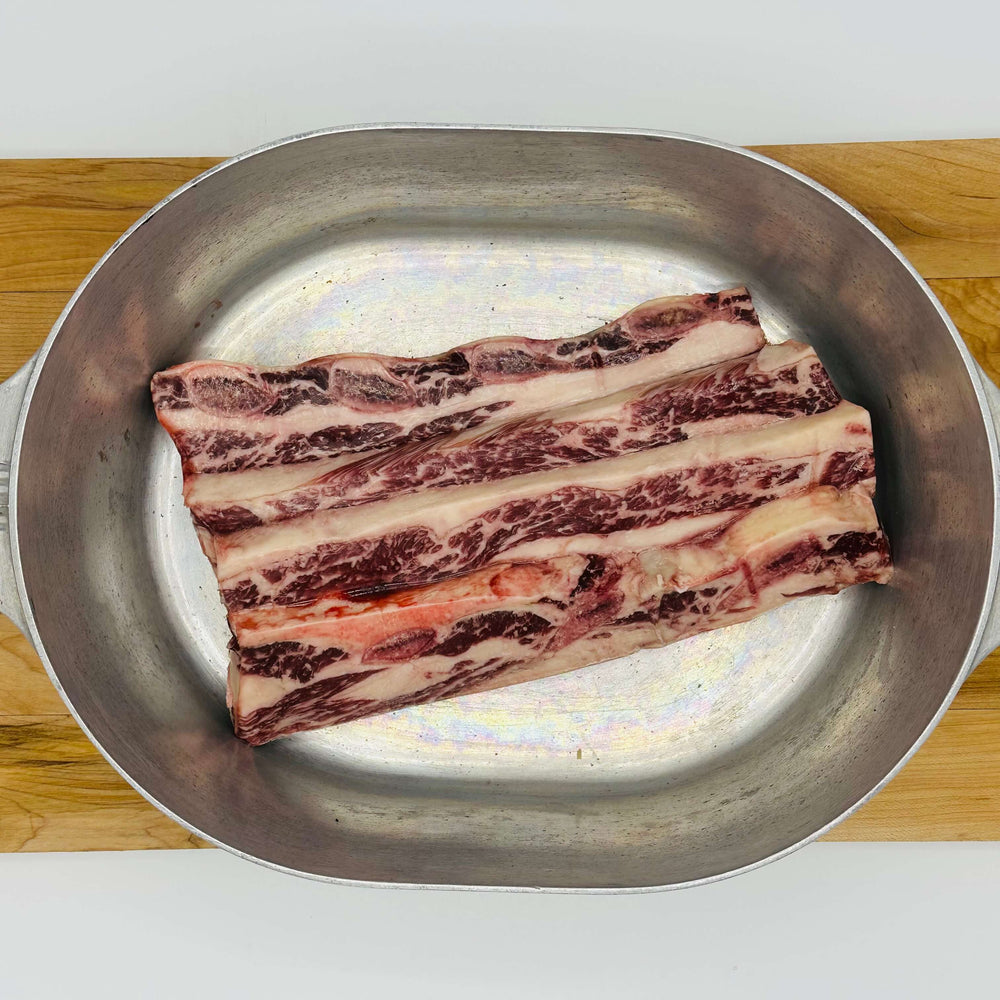
Short ribs are one of those cuts that make you feel like a rockstar in the kitchen—rich, flavorful, and surprisingly versatile. But if you’ve ever shopped our Creamery Creek beef and paused at the words flanken cut or English style, you’re not alone. Here’s a handy guide to understanding the difference between these two cuts and how to bring out the best in each one.
What Are Short Ribs?
Short ribs come from the lower portion of the ribcage of the cow, typically near the chuck (shoulder). They’re beautifully marbled, with a mix of meat and connective tissue that transforms into something luxurious when cooked low and slow.
Flanken Cut Short Ribs
Flanken-style short ribs are cut across the bone, leaving small cross-sections of bone in each slice. They’re usually about ½" thick and often come in strips with 3–4 small bones running through them.
How to Cook Flanken Ribs:
This cut is popular in Korean BBQ (hello, galbi), but it’s not just for the grill. Because flanken ribs are thinner, they cook up quickly and are perfect for high-heat methods like:
-
Grilling or broiling – Marinate overnight and grill over medium-high heat for 3–4 minutes per side.
-
Stovetop searing – Try a cast iron pan with a glaze or marinade for a fast, flavorful dinner.
-
Slow braise – Even though they’re thin, you can still braise them if you want them super tender.
🧄 Pro tip: A bold marinade makes these shine—soy sauce, garlic, brown sugar, and a splash of vinegar or citrus for balance.
English Style Short Ribs
English-style short ribs are cut parallel to the bone, so each piece contains one long bone with a thick slab of meat on top. These are the hearty, slow-cook champions of the beef world.
How to Cook English Ribs:
Because they’re thicker and more collagen-rich, these ribs need time to become tender—but oh, is it worth it.
-
Braising – Classic and cozy. Brown the ribs, then simmer them in broth, wine, or tomato sauce for 2–3 hours until fork-tender.
-
Slow cooker or Instant Pot – Set it and forget it. Low and slow is the name of the game.
-
Oven roasting – Braise in a Dutch oven, covered, at 300°F for several hours.
🌿 Pair with root vegetables, herbs like thyme and rosemary, and a splash of red wine or balsamic for an ultra-satisfying meal.
Which One Should You Choose?
It depends on what you're cooking!
| Craving | Go With | Why |
|---|---|---|
| Fast, flavorful weeknight meal | Flanken | Quick to grill, great with marinades |
| Cozy, fall-apart comfort food | English | Meaty and melt-in-your-mouth after a slow braise |
| Korean-style BBQ | Flanken | Traditional galbi cut |
| Holiday-worthy beef dish | English | Impressive and deeply satisfying |
At Creamery Creek, both flanken and English-style short ribs are cut from our dry-aged beef, which means deeper flavor and more tenderness from the start. Whether you're firing up the grill or settling in with a Dutch oven, these short ribs are ready to impress.
Shop our beef short ribs here →
You might also like
Products featured in this blog post



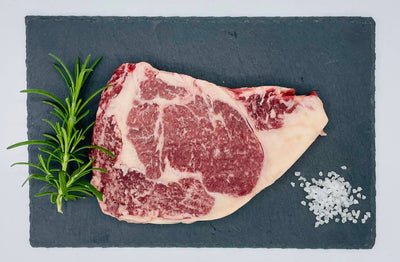
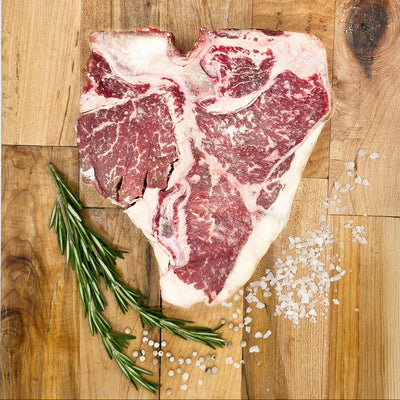
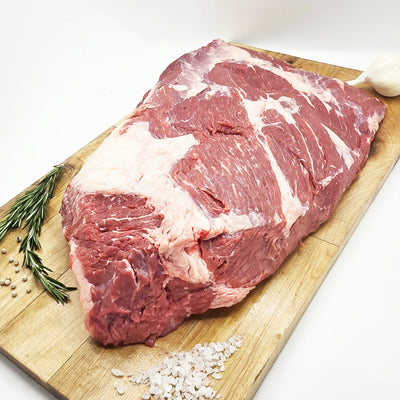
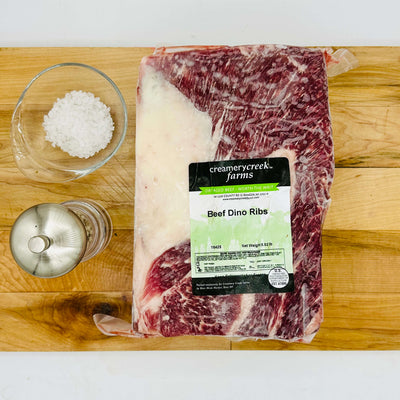
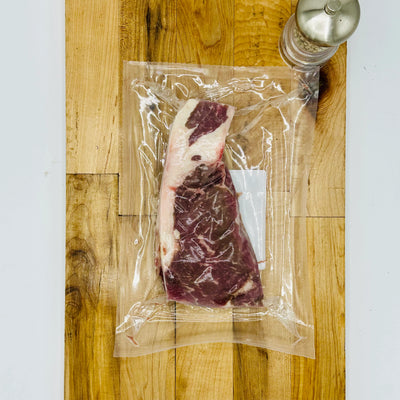
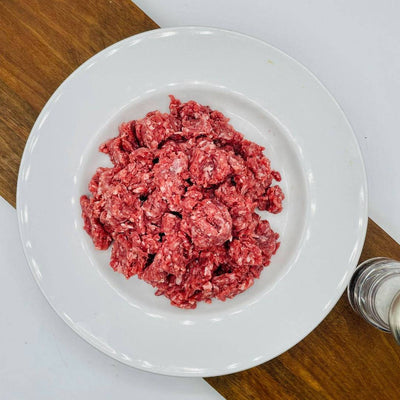
Leave a comment
Also in Farm Family Recipes
Dry Aged Beef with Himalayan Salt
I love the science of the aging process. Just wanted to share some tidbits I've picked up along the way. Dry aged beef is already rich and tender, but Himalayan salt adds another layer of flavor and balance. From salt chambers that guide the aging process to a simple finishing sprinkle at the table, it helps beef shine without overpowering it.
Keep reading
Dry Aged Ground Beef Cheeseburger Dip
This Cheeseburger Dip comes straight out of my church cookbook collection, though I’ve made it my own. It’s creamy, beefy, and simple to pull together, with secret that makes it unforgettable. Perfect for game days, tailgates, or anytime your crew wants something hearty and cheesy.
Keep reading
Rub Recipes for Big Beef Bones
Big bones deserve big flavor. Beef back ribs, short rib plates, and chuck rib dino bones aren’t your everyday cuts, they’re statement pieces. When you put them on the smoker or grill, you want the kind of flavor that makes people wander over to see what’s cooking. That’s where a good rub comes in.
A rub doesn’t have to be complicated. Think salt, sugar, and spices. Salt builds the foundation, sugar balances and caramelizes, and spices bring the personality. From there, you can keep it simple or turn up the flavor.
Keep reading